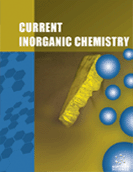Abstract
There is a burgeoning body of evidence that aluminum can be implicated as an etiological factor of several neuropathological events. The molecular mechanisms underlying aluminum toxicity are still poorly understood. Reflecting on many studies, we suggest a new view on the toxicity of aluminum in a link with fluoride. Soluble aluminofluoride complexes - fluoroaluminate (AlFx) are formed in water solutions containing fluoride and traces of aluminum. These complexes are able to simulate phosphate groups in many biochemical reactions. AlFx are used in many laboratory investigations of guanine nucleotide binding proteins (G proteins). They affect various enzyme activities and cell signaling cascades. The hidden danger of a long-term synergistic action of aluminum and fluoride is not fully recognized at this point. We suggest that aluminum and fluoride can exacerbate the pathological and clinical problems, namely by interfering with a great number of G-protein-dependent cellular mechanisms, and by worsening excitotoxicity, microglial priming, and brain inflammation. Our suggestion opens the door to a better understanding of mechanisms of aluminum harmful effects on human health.
Keywords: Aluminum, aluminofluoride complexes, Alzheimer disease, fluoride, fluoroaluminate, G proteins, human exposure, neurotoxicity, AlFx
 38
38

